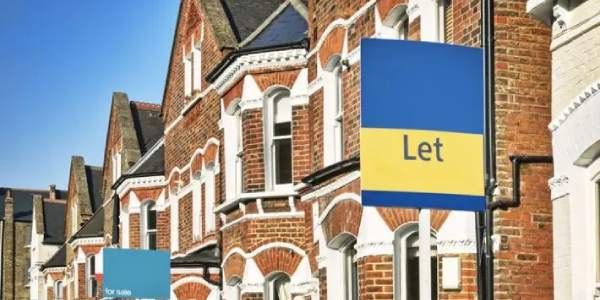Limited Company Buy to Let Mortgages
If you want to purchase a buy to let through your limited company it’s important to know what your mortgage options are.
The limited company applying for a buy to let mortgage needs to be a Special Purpose Vehicle, or SPV. Any old Ltd, Co. will not be acceptable. Here we run through the lending criteria and explain how to get the best rates.

What is a limited company mortgage?
It is possible for an SPV company to buy and hold investment properties such as buy to let and holiday let.
Where the purchase involves a mortgage, the mortgage application needs to be from the actual company, so it matches the ownership. So as a quick example, if a company called SPV One Limited were to purchase a property the set up would be:
- Property owner: SPV One Limited
- Mortgage borrower: SPV One Limited
- Landlord: SPV One Limited
Changes made to the tax relief available for buy to let mortgages has led many investors to consider holding their properties in a limited company structure. This is seen as a more tax efficient set up which allows all of the mortgage interest to be claimed as an expense to the business.
It’s important to remember that when a property is held in a limited company, the mortgage repayments must be made by the company and not the individual. So it is vital that a matching business bank account is set up.
The actual mortgage that a limited company can take out is almost the same as a conventional buy to let mortgage, but the way that they are assessed is different.
How does a buy-to-let mortgage for a limited company work?
The basic choices for method of repayment and interest rates are the same as a normal mortgage. Interest only is favoured by most investors and there will be fixed rate and tracker rates to compare.
The majority of lenders need the limited company to be an SPV. This is a company specifically designed to buy and hold properties.
The directors of the SPV will be required to provide the lender with a personal guarantee. This allows the lender to personally pursue the directors should the SPV fail to keep up with its repayments.
It is the company that will take out the mortgage and also own the property. Any rental income will get paid to the company (as it owns the property) and it will need to make the mortgage payments each month.
Eligibility criteria
The criteria for SPV buy to let mortgages are fairly similar to the criteria for normal buy to let mortgages.
Most importantly, the SPV has to be correctly set up with the purpose of buying, selling and managing property.
Brand new SPVs can apply for a mortgage immediately, there’s no requirement for a minimum age etc.
As the company is usually new, there will be no income to put on a buy to let mortgage application. For these cases the lender will be assessing the company directors for credit worthiness and to confirm their income.
The property rental income needs to be at least 125% of the mortgage interest cost.
For a deposit you will usually need 25%, although occasionally 20% is possible. So this would mean a loan to value of 75%-80%.
The property type could be; house, flat, maisonette or multi unit freehold block.
CONTACT A MORTGAGE BROKER
If you are ready to take the next step then we can put you in touch with a fully qualified independent mortgage broker.
Deposits
Setting up a Special Purpose Vehicle (SPV) is the first step to securing a limited company buy-to-let mortgage.
But once it’s established, how do you actually get the funds into the SPV to cover the deposit, fees, and other purchase costs?
Below are the main ways for getting cash into an SPV. Speak to your tax adviser before taking any action.

Director’s Loan
This is the most common method. Directors can lend some of their own money to the SPV, which is then recorded as a debt owed to the director. This loan can be repaid over time from the SPV’s rental income or through the sale of the property.
Shareholder Investment
Shareholders (who may also be the directors) can invest capital into the SPV in exchange for shares. This increases the company’s equity and can be used for the property purchase.
External Loan
While less common, the SPV can also take out a separate loan from a third-party lender. This loan is usually secured against the director’s personal assets or other property owned by the SPV.
Combination
Many investors use a combination of these methods. For example, they might contribute some funds as a director’s loan, raise additional capital through share investment, and then secure a smaller external loan to cover the remaining costs.
Personal guarantees
Personal guarantees will be required from the directors.
A personal guarantee means that, in a situation where the lender repossesses a property, and there is still money outstanding, the person offering the personal guarantee will be liable for the remaining balance which could include interest and fees.

What are the advantages?
The main advantage of using a limited company to own your buy to let properties is tax efficiency.
Any money you withdraw has to come from the profits of the business and you are then liable for personal tax. However, you can also leave profits within the company to fund future purchases and there is no personal tax to pay on these sums.
A company can own any number of properties, of any type, so it’s a neat way of creating a portfolio that could become a family benefit for future generations.
This option is not right for everyone so it is important to seek advice first.
Will this work with Airbnb?
airbnb.co.uk is a platform that specialises in accommodation for holidays and short stays.
If you purchase a property with a buy to let mortgage the lender will be expecting long terms tenants to be living there, anything else will be a breach of the mortgage conditions.
However, solutions for airbnb are available in the form of a holiday let mortgage, which does work with a limited company (SPV of course).
How many mortgages can the company have?
There’s no overall limit, so it could have dozens or maybe hundreds of mortgages. You will be classed as a portfolio landlord when you own 4 or more rental properties, whether they are owned personally or through a limited company.
Some lenders will also have a limit on the total amount you can borrow from them. This could be the overall number of mortgages or a financial limit.
Property portfolios
A portfolio landlord will be assessed differently to a landlord who owns less than three properties, when applying for a mortgage.
Where the portfolio contains a large number of properties then a buy to let portfolio mortgage might be worth considering. This simplifies your finances as you have one mortgage facility that funds multiple properties.
Is a limited company buy to let mortgage right for me?
This is a decision that should be made with the help of a specialist mortgage broker and accountant. The benefits are mainly around tax efficiency, but there are also potential disadvantages.
For higher rate taxpayers who own multiple properties the tax savings can be significant.
You will find that some of the high street lenders tend not to favour lending to limited companies. For now, it’s a bit too spicy for them.
The lenders that do favour SPV companies are smaller lenders and specialist lenders, many of whom prefer to only deal with mortgage brokers. The interest rates are marginally higher than for standard buy to lets but as the market matures this gap should close. It is estimated that around 75% of BTL mortgage applications are coming from a limited company.
If you would like to see if this is right for you then we can put you in touch with a specialist buy to let mortgage broker.






